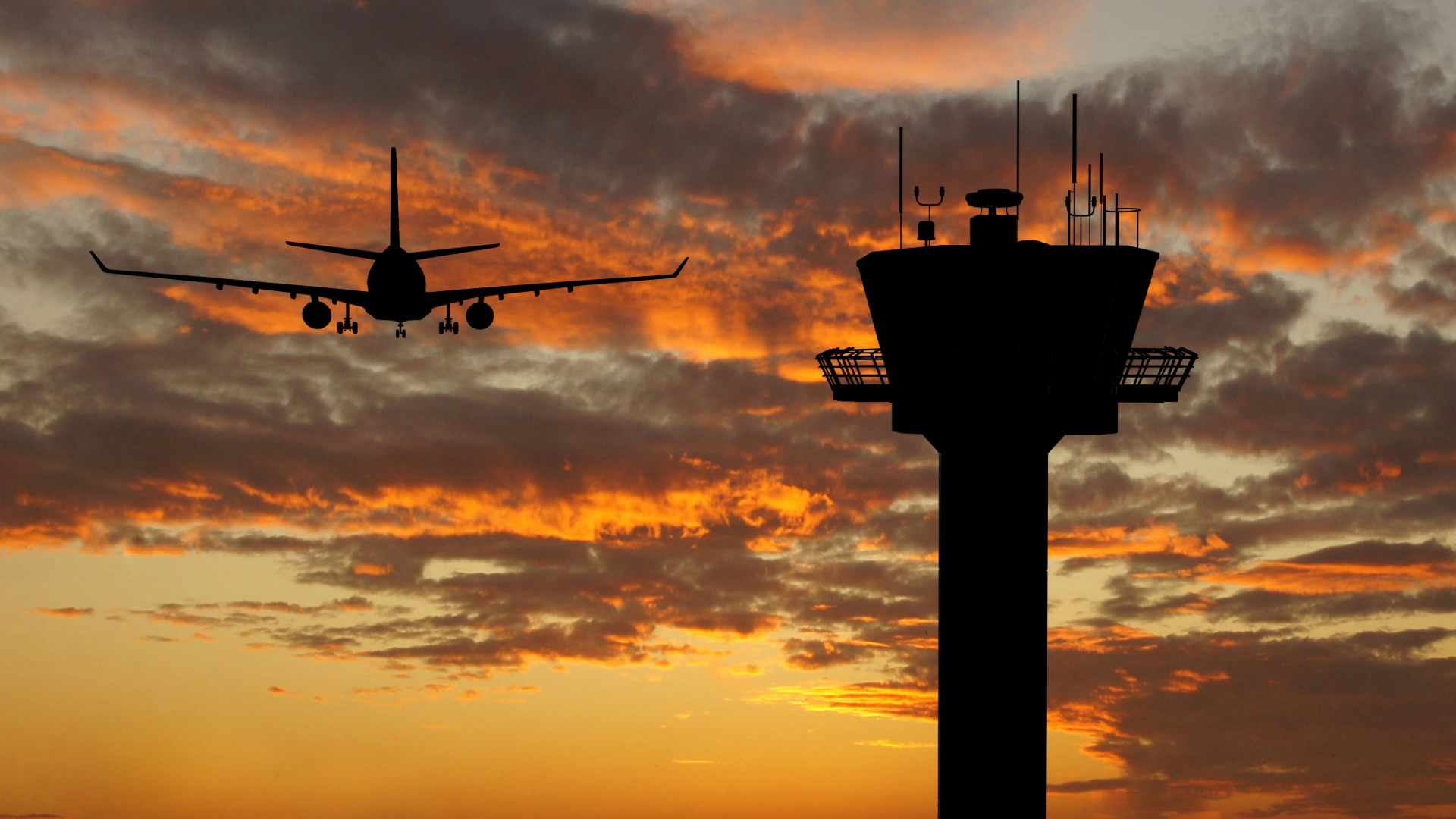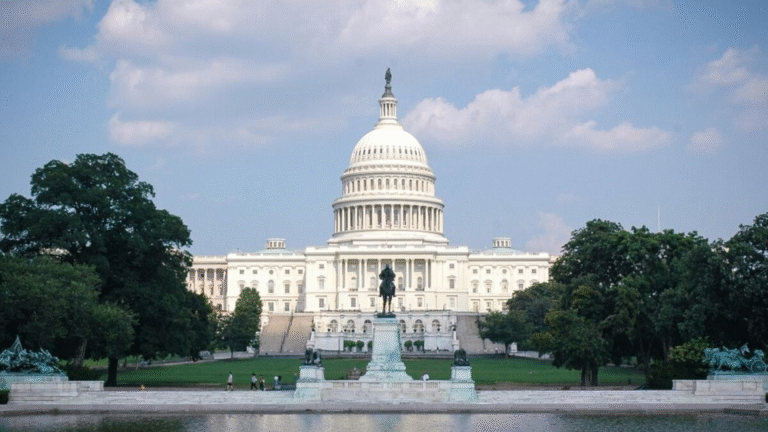Air Traffic Crisis: The Aging System Keeping Our Skies Safe—For Now
America’s skies are safe—but barely. Behind every flight is a shrinking, overworked force of air traffic controllers using outdated equipment, crumbling towers, and even parts bought on eBay to keep planes from colliding.
This story exposes how chronic understaffing, decades of neglect, and stalled modernization have pushed the nation’s air traffic control system to its breaking point.
Commercial aviation in the United States remains extraordinarily safe. Large, fatal airline crashes are extremely rare, and air travel is still the safest way to get from point A to point B.
A central reason is the nation’s air traffic controllers, who help shepherd roughly two million passengers safely every day. Yet a growing series of incidents and internal warnings show a system under significant strain—driven by chronic understaffing, aging technology, and stop-start funding that has stalled long-promised modernization.
Recent Warning Signs
Several close calls have made headlines.
In San Diego, a Citation business jet nearly landed on top of a Southwest 737. In Austin, a FedEx plane was cleared to land on the same runway as a Southwest flight. In Boston, a JetBlue cockpit photo captured a business jet pulling onto their runway without permission.
In May of this year at Newark, a cascade of system outages left controller screens dark for up to 90 seconds at a key facility, after which about a half-dozen controllers took trauma leave due to working conditions.
The risks are not theoretical.
In January, a passenger jet and a military helicopter collided near Reagan National Airport, killing 67 people. A preliminary report suggested a controller shortage that night, with one person simultaneously managing both helicopter control and local flight control.
Two months later there was another close call at the same airport; a supervisor in the tower had been accused of punching another controller, prompting the FAA to dispatch mental-health professionals to offer confidential support.
How the System Works—and How We Got Here
In aviation’s early days, flights were infrequent and largely daytime, operating under a simple “see and be seen” principle. That ended with a 1956 midair collision over the Grand Canyon, after which Congress funded a major upgrade to the national airway system and created the Federal Aviation Administration (FAA) to oversee air traffic control.
Today, a single flight typically passes through a chain of specialized facilities: Ground Control taxis planes to the runway; the Tower manages takeoffs and landings (surface to roughly 2,500 feet within about a five-mile radius); TRACON (Terminal Radar Approach Control) sequences arrivals and departures to around 18,000 feet; and en route centers manage aircraft during the cruise phase across the country.
Former controllers describe the workload as “95% boring and routine, 3% exciting and routine, 1% exciting and not routine, and **1% ‘holy ****’.” The last one is where lives can hinge on seconds.
A Chronic Staffing Shortfall
By recommended levels, the country needs more than 14,000 certified professional controllers (CPCs). We have just under 11,000—and about 99% of ATC facilities are operating below recommended staffing.
By late 2023, internal reporting indicated potentially dangerous close calls multiple times a week. Controllers cite mandatory overtime, six-day weeks, and 10-hour days as safety risks. Internal FAA documents—reported publicly—capture anonymous accounts of mistakes and exhaustion.
Part of the staffing crisis is historical.
In 1981, after campaign promises for better staffing, benefits, and technology went unfulfilled, the controllers’ union struck. In response, the administration fired around 11,000 controllers and banned them from rehire.
The government then launched a massive hiring spree; about two decades later, those hires reached retirement together, creating a cohort wave that the FAA has never fully recovered from.
A Narrow Pipeline with High Attrition
Becoming a controller is intentionally hard. Applicants must speak English clearly, be under 31 at application, have 20/20 vision in each eye, and no history of heart disease, high or low blood pressure, or mental health conditions that would pose a hazard.
Candidates take the Air Traffic Skills Assessment (ATSA)—a rigorous test of working memory, multitasking, and spatial awareness (including real-time collision-avoidance tasks while solving math problems). Visual-spatial skills—often honed in gaming—can help.
The pipeline is tight. Fewer than 10% of applicants are accepted into training. The FAA’s single academy in Oklahoma City can handle only about 1,800 trainees per year, and roughly 30% fail at that stage. Those who pass then spend two to three years training at an operational facility, where about 20% wash out.
The net: from 1,000 applicants, only about 50 become fully certified—a 5% success rate after years of training.
While certified controllers are generally well-paid and can earn a pension after 20 years, reaching that milestone is increasingly difficult amid mandatory overtime and sustained stress. Mental-health policies can also discourage treatment: using an approved antidepressant requires stepping away (potentially unpaid), then maintaining a stable dose for six months with no symptoms or side effects before returning.
Medical disqualification can trigger “separation from service,” risking one’s pension. Burnout is so well-recognized that controllers face a mandatory retirement age of 56—yet many retire earlier. Despite years of “ramped-up hiring,” last year the system’s net gain was only about 36 controllers, as attrition and retirements offset new hires.
Old Tools, Aging Systems, Crumbling Facilities
In many towers, controllers still rely on paper flight progress strips, a technology dating back decades. That would be tolerable if everything else were modern and reliable, but it isn’t.
In 2023, the FAA assessed 138 systems and found 51 “unsustainable” and 54 “potentially unsustainable.” Industry and union leaders report that some operational computers still run on Windows 95; testimony to Congress has highlighted continued use of floppy disks and paper strips.
The maintenance backlog is severe. A recent report found $5.3 billion worth of facility components past service life. For many systems, spare parts are no longer available because product lines have been discontinued and manufacturers no longer exist; the FAA has even resorted to buying replacement parts on eBay.
Facility conditions are often poor: elevator failures require long stair climbs to tower cabs; controllers have reported bees and biting flies harassing them while working; and a government report included a photo of a radar system cooled by a rotary fan. Nearly two decades after controllers raised issues like condensation blinding a Puerto Rico cab, black mold in Detroit, and bats in a St. Louis tower, the problems persist.
This prolonged decay stands in contrast to NextGen, announced in 2007 to modernize air traffic control by 2025. That target has not been met; a report two years ago found the FAA’s new-technology budget had shrunk since NextGen’s launch.
A core obstacle is that FAA facilities and equipment are funded through discretionary spending, leaving modernization vulnerable to budget fights. The Oklahoma City academy, for example, was closed most of 2013 due to sequestration and closed again in late 2018 during the federal shutdown over border-wall funding—interruptions that hinder long-term hiring and training.
What This Means for Safety and Workforce Health
Safety today relies on professionals working through staffing gaps, system outages, and aging infrastructure. Newark’s screens going dark for up to 90 seconds and the Reagan incidents illustrate how quickly fatigue, equipment failures, and thin staffing can compound risk. Policies that disincentivize mental-health care add another layer of fragility in an already high-stress environment.
Policy Ideas on the Table
Privatization has been floated in the past, but a congressional research review found no evidence it would outperform the current public system.
Current leadership has emphasized the need to increase staffing, offering pay bumps to trainees and advancing plans begun previously to expand training beyond the single Oklahoma City facility—steps in the right direction.
At the same time, public statements blaming FAA problems on DEI initiatives misdiagnose the issue; the documented problems are staffing capacity, technology obsolescence, facility decay, and unstable funding. Announcements of a “brand new air traffic control system” to be delivered in three years have, so far, lacked specific funding plans or milestones.
There is bipartisan agreement that the system has a problem. There are no quick fixes. A viable path forward requires sustained, predictable investment over many years.
A key structural change would be for Congress to designate FAA facilities and equipment as mandatory spending, rather than discretionary, to enable multi-year planning and prevent shutdowns and sequestration from repeatedly stalling training and modernization.
In parallel, the country needs to ramp up hiring and expand training capacity; modernize critical systems (retire paper strips and legacy platforms, restore parts supply); stabilize facilities (reliable elevators, HVAC, pest abatement, basic redundancy); and update medical and mental-health policies so controllers can safely seek care without risking their livelihoods.
The Bottom Line
America’s skies are safe, thanks largely to the skill and vigilance of air traffic controllers.
But the safety we enjoy is maintained by a workforce stretched thin, operating with too few people, too many hours, outdated tools, and facilities past their service life—all under a funding regime that repeatedly pulls the rug out from long-term planning.
Protecting the public means valuing controllers, stabilizing the pipeline, and modernizing the system they rely on.
The sooner we commit to sustained investment and structural funding reform, the sooner we can ensure the U.S. air traffic control system is as resilient as the safety record it’s expected to uphold.
Until then, expect the delays to continue.







